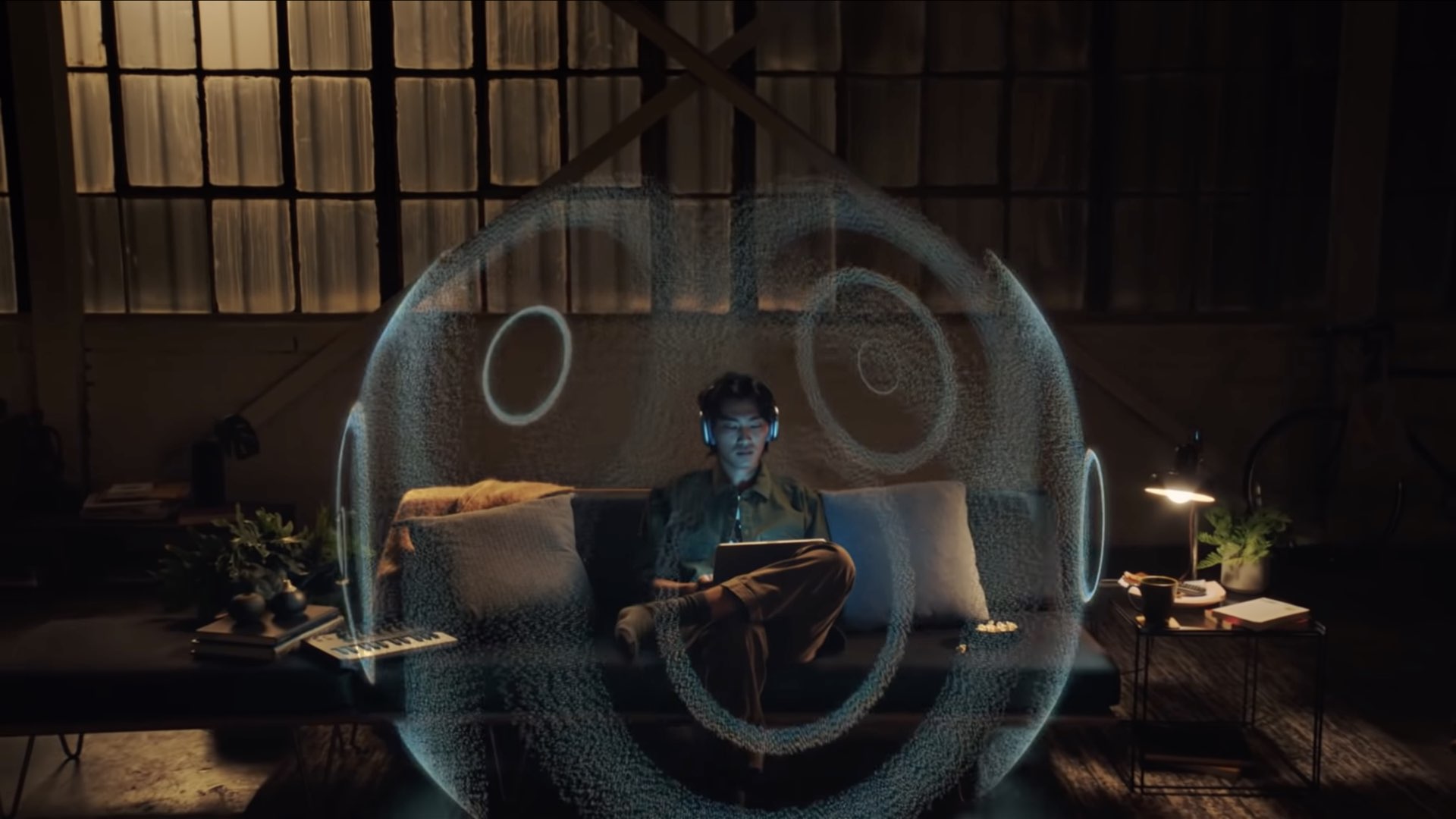Learn how to use Apple’s Spatialize Stereo feature to boost stereo, two-channel audio, and other non-Dolby audio content on your iPhone, iPad, and Mac.

Spatial Audio is great, but it only works if the source material is multi-channel audio. Thankfully, Apple’s Spatialize Stereo feature can place any stereo audio mix in a virtual Spatial Audio environment around you.
You can toggle the Spatialize Stereo feature on iPhone, iPad, and Apple silicon Mac, running the latest version of their respective software, when using AirPods 3rd generation and newer, AirPods Pro, or AirPods Max.
Turn on Spatialize Stereo for 3D-like sound on Apple devices
You will have to access your AirPods volume controls to spatialize stereo content for a richer soundscape.
On iPhone or iPad
- Put on your AirPods and play some stereo or mono content in a supported app, like Music or Spotify.
- Open Control Center on your iPhone or iPad.
- Touch and hold the volume slider until it expands.
- Tap Spatialize Stereo and select Fixed or Head Tracked.

Now you can enjoy simulated 3D soundscape on your AirPods even though you’re actually listening to a two-channel stereo source.
The feature enhances stereo content for almost any app, including videos in the Photos app, songs on Spotify, videos on YouTube, and so on. Native apps that bypass Apple’s standard media player may not support this.
On Mac
- Put on your AirPods and play some stereo or mono audio in an app on your device, like Music.
- Click the AirPods icon in Mac’s top menu bar or go to macOS Control Center and click the Sound pane.
- Set Spatialize Stereo to Fixed or Head Tracked to turn the feature on or off.

Note that not every audio content supports Spatialize Stereo. Secondly, I could not activate Spatialize Stereo on my M2 Mac mini, but it worked on my M1 MacBook Pro, even when I tested using the same songs on Apple Music.
How Apple’s Spatialize Stereo feature works
Spatialize Stereo was designed to enhance standard stereo or mono sound. It’s especially convenient for TV shows and movies where using this feature creates a more realistic experience by centering dialog and other spoken content.
Spatialize Stereo uses computational audio to simulate three-dimensional sound.
It was specifically designed to enhance the stereo sound but isn’t perfect and can be a hit-and-miss at times. That said, Spatialize Stereo should clearly sound better to your ear than the L/R separation provided by the original stereo content.
Spatialize Stereo is great, but what is Spatial Audio?
It’s easy to confuse Spatial Audio with Spatialized Stereo.
Spatial Audio is a computation audio technique that takes your multi-channel audio like Dolby Atmos and creates a multidimensional sound experience.
By applying certain audio effects, Spatial Audio creates a faux surround sound experience that makes you feel like you’re inside of the action. You’ll enjoy a clearer separation between the voices, music and background sound effects.

You don’t need a multi-speaker Dolby 5.1 or 7.1 setup with a dedicated AV receiver and other Hi-Fi equipment to enjoy Spatial Audio. All you need is a pair of standard headphones like your AirPods or Beats along with Spatial Audio turned on Settings.
You can also enjoy Spatial Audio through the built-in iPhone and iPad speakers.
To perform its magic, however, Apple’s Spatial Audio algorithm requires source material to be encoded in one of the multi-channel audio standards, like Dolby 5.1 and Dolby Atmos, as explained in a support document found on the Apple website.
Check out next: